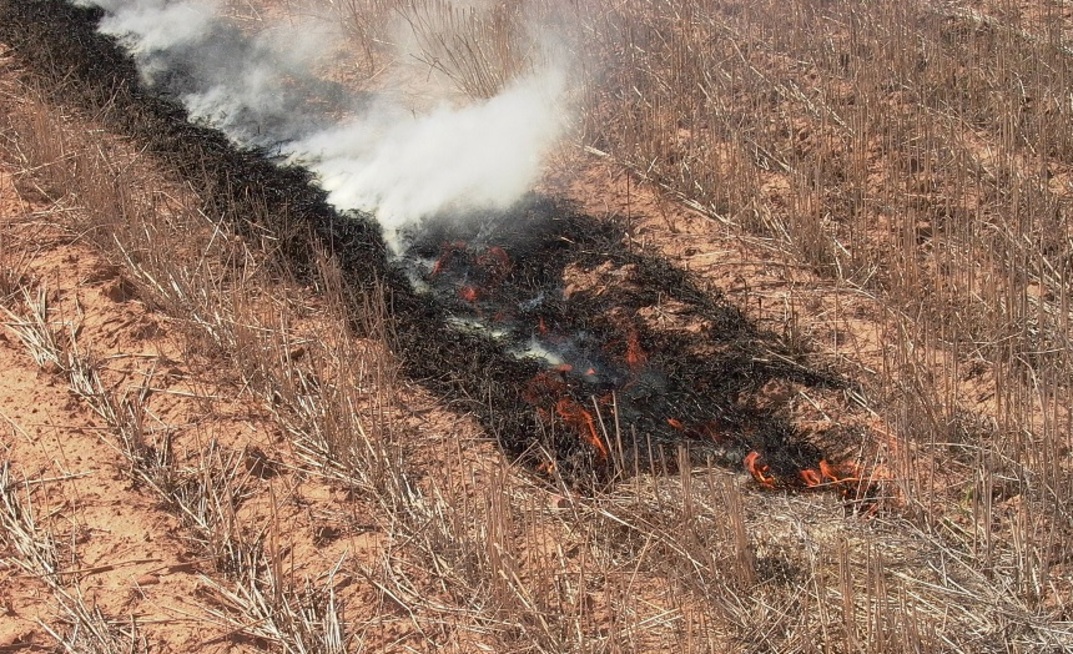Robert Gollasch has been burning narrow windrows for a few years now and has found ways to minimise the time commitment while still gaining the benefits in his weed control program.
Gollasch and his wife Liz run a mixed farming operation at Wallacetown, north of Wagga Wagga, NSW. For the last 40 years they have continuously cropped most of their 2000 ha farm and currently run 1100 first cross ewes.
In the early 2000s the Gollasch’s noticed increased weed burden across their cropping area and that herbicide resistance was reducing their control options.
In response, Gollasch reassessed his cropping system and introduced more diversity in the crops grown and the weed management tools used.
“Implementing narrow windrow burning was not difficult but it did take a couple of years for us to really refine the practice on our farm,” Gollasch said.
“Preparing for narrow windrow burning is fairly simple – the chute only takes a few hours to make and fit – and then it is down to cutting the crop short so that everything goes through the header. Although cutting short can be difficult in canola we have found that it is worth persevering with.”
He designed and built a chute for his Claas harvester and uses a custom-made trailer to safely and easily remove the spinners.
After harvest the sheep are allowed to graze the narrow windrows left after harvesting cereal and lupin crops.
It is important not to leave the windrows sitting in the paddock for too long.
Gollasch found that an inch or two of rain on the windrows in autumn can make them very difficult to burn. He tries to burn the windrows as soon as permits are available in autumn and conditions are safe.
“One thing we have learned is that narrow windrow burning is most effective when you tackle a smaller area and do it well, rather than trying to windrow and burn every crop, every year,” he said.
“If weed numbers are increasing in a paddock we will usually try to narrow windrow burn in that paddock for two or three years in a row to really drive down the weed seed bank.”
Windrows are burned about 200–300 ha each year, primarily in the canola or lupin phase of the rotation. To burn the windrows safely and effectively, the rows are lit at midday, to be complete by 5pm.
“Two successive years of windrow burning in the canola and lupins and then hay baling cereal crops is a very effective way to run down weed numbers,” he said.
The combination of increased crop competition and harvest weed seed control go hand in hand. In competitive crops, weed seed set is reduced and weeds that do set seed tend to have seed heads held high in the canopy where they are easier to capture at harvest.
For more information about managing herbicide resistance visit the Weedsmart website: www.weedsmart.org.au
























